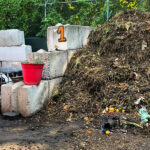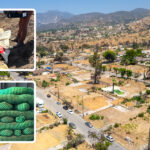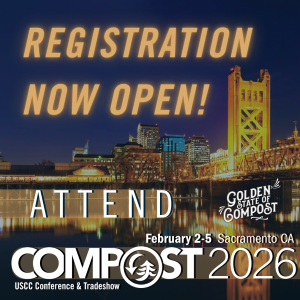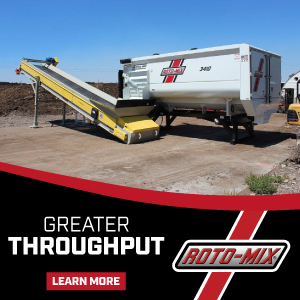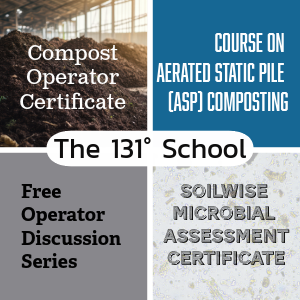
Rhodes Yepsen
BioCycle March/April 2019
Innovation may occasionally start by accident, but it requires foresight and dedication to bring that spark to fruition. The Zero Waste movement is an example of this — a vision of reality where resources aren’t being squandered in landfills and incinerators — which takes not just one but a series of steps to accomplish large-scale change. Specific to food waste, it involves solutions to reduce wastage all along the value chain, from the farm to distribution and retail, to feeding hungry people and diverting the nonedible portion to composting and anaerobic digestion, and returning those nutrients to the soil to complete the cycle.
There are hundreds of examples of successful food waste diversion programs across the U.S. and the world (many profiled in BioCycle over the last 60 years). Some are led by governments and municipalities as a result of regulations and goals. Others are led voluntarily by businesses that see opportunities to do things better. Several million households in the U.S. now have access to curbside collection of food scraps alongside their trash and recycling; dozens of stadiums, hotels, and restaurants have reached over 90 percent diversion rates through robust composting programs. In the context of Zero Waste, these communities start by identifying opportunities for reuse and prevention, followed by maximizing diversion of the remaining waste stream, such as by limiting any single-use foodservice items to those that can be composted along with inedible, leftover food.
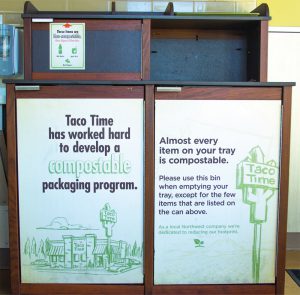
Businesses like Taco Time are reaching over 90 percent diversion with compostable foodservice items that can be placed into one bin along with
the food.
But all of that is harder than the status quo of landfilling and burning waste, and inertia pulls us into comfort zones, away from solving the challenges of continual improvement. A current example is where some communities and composting facilities are moving to “food only” programs due to a handful of difficulties, telling the businesses and residents they serve that the Zero Waste program involving compostable foodservice items, e.g., cups, carryout clamshells, is no longer available.
Compostable food scraps bags have been shown time and again to boost participation rates by making it easier and cleaner — we line our trash can with a bag, why would we expect people to collect the messiest part of that waste stream without a bag? And businesses are reaching over 90 percent diversion with compostable foodservice items that can be placed into one bin along with the food, rather than relying on those willing to scrape out containers and items into three bins (and increasing the potential of contaminating both the recycling and composting streams).
Composting Infrastructure
However, that’s not to say all composting facilities are set up to handle the stream of postconsumer food waste and packaging. First, many facilities are not designed or operated with that feedstock in mind — of the roughly 4,000 composting facilities in the U.S., most are low tech and intended for yard trimmings only. They aren’t permitted to take food, much less equipped for how to compost that food and associated packaging.
Of the several hundred taking food waste, most have made only minor upgrades in order to handle basic, clean preconsumer food scraps, looking primarily at pathogen reduction, odor and vector control, etc. A smaller subset of these facilities is actively taking postconsumer food scraps mixed with food-soiled paper and compostable packaging. Of those, only a few have really been designed and are being operated with those packaging feedstocks in mind.
For instance, some food waste composting facilities are setting aggressive timeframes of only 3 to 6 weeks to maximize throughput of that food, which is mostly water, for a business model more reliant on tipping fees than selling compost. These accelerated processes often cannot completely break down the postconsumer mix of food-soiled paper and compostable products, because, if certified, those items have been tested based on standard conditions throughout the complete biological composting process, not an abbreviated version thereof.
Besides shortened timeframes, some facilities compost at suboptimum moisture content (in the teens, rather than 40 to 55 percent), elevated temperatures (maintained above 160°F), etc. To help pinpoint how these varying conditions at facilities impact the disintegration of products in the postconsumer mix, the compostable packaging industry has invested in the Composting Council Research & Education Foundation (CCREF) field testing protocol and database to facilitate an open and informed conversation.
Addressing Barriers
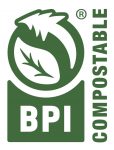
BPI’s updated logo improves labeling of compostable products and distinguishes them from conventional ones.
Labeling
Beyond timeframes and composting conditions, contamination is likely the biggest challenge, as it’s difficult to tell the difference between compostable and noncompostable items. If there’s a mix of compostable and noncompostable products at a restaurant or venue, for example, there’s likely to be consumer confusion at the sorting bin. This can be improved through strong education and outreach, and with requirements that only certified compostable items be used to make it simple. Improved labeling to distinguish compostable products from conventional ones also is key. The Biodegradable Products Institute (BPI) just released an updated logo to facilitate this. All of these steps have been working effectively in programs in Minneapolis, Pittsburgh, Seattle, San Francisco, Boulder, Raleigh, Burlington, Santa Cruz, and elsewhere. BPI is establishing a composting advisory panel to pool this collective knowledge and make sure there are resources to maintain and build on these successes.
Compost Markets
Organic agriculture is another challenge today, since facilities accepting compostable products cannot currently market that compost as approved for use on organic farms. And there are concerns about the impact of compostable products on the composting process (do they add value, are there emerging chemicals of concern?). BPI is working on solutions to these as well, developing a petition for the National Organic Standards Board, changing our certification program to restrict fluorinated chemicals, and partnering with others on research that shows compostable products actually provide the same carbon, bulk density, etc., as traditional feedstocks like yard trimmings.
Staying Focused
Finally, there is global attention on plastics today, and how or whether “bioplastics” are a solution or part of the problem. The answer is that bioplastics are not a panacea. They are beneficial in specific contexts. Compostability is simply an attribute that means a product can completely break down in a composting facility, nothing more. We should not conflate the attribute of compostability with a broader environmental impact or benefit, or expect products with that attribute to magically solve problems in other contexts. This is risky, especially if those misconstrued impacts are used to influence public policy that restricts composting (the attribute) in favor of the linear model of extract, use, landfill/burn, which is the status quo in large part because it is efficient and simplistic.
Zero Waste Pioneering
Are there challenges to setting up and maintaining robust composting programs to reach Zero Waste? Absolutely, but if it were easy and already being done effectively in every community, then it wouldn’t fit the definition of visionary or innovative, and we wouldn’t be wasting over 70 million tons of organics each year, costing us $208 billion, emitting potent greenhouse gases while robbing the soil of organic matter needed to mitigate the effects of climate change and feed the planet.
This is a time to be pioneers and not throw up our hands because it is hard. Composting and recycling just the “easy” stuff will not get us to zero waste. We need to consider how the attribute of compostability can facilitate diversion of those 70 million tons. This means rethinking the system, taking steps towards a different future, and working together to address the problems that arise along the way.
Rhodes Yepsen is Executive Director of BPI, which advocates for scalable organics diversion by verifying that products and packaging are compostable through its certification program, and other initiatives.




